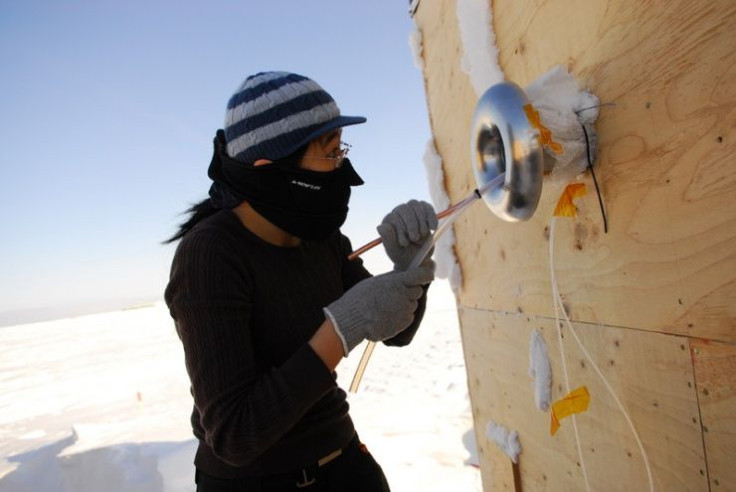Molecular Chlorine In The Arctic? Unexpected Levels Reported That May Influence ‘Atmospheric Chemistry’ [PHOTO]

Molecular chlorine was found at unprecedented levels in Arctic air, a new study suggests.
The findings, published in the Advance Online Publication of Nature Geoscience, reveal how molecular chlorine drawn from the salt in melting sea ice produces chlorine atoms that are able to oxidize with elemental mercury that’s deposited into the Arctic ecosystem.
“Molecular chlorine is so reactive that it’s going to have a very strong influence on atmospheric chemistry,” Greg Huey, a professor in the School of Earth and Atmospheric Sciences at the Georgia Institute of Technology in Atlanta, said in a statement.
Researchers made the discovery while spending six weeks above Barrow, Alaska, in 2009. Using chemical ionization mass spectrometry, the scientists collected the data but remained skeptical of their unusual findings. After several years running other experiments, they came to the conclusion that their original findings were accurate.
“No one expected there to be this level of chlorine in Barrow or in polar regions,” Huey said.
Molecular chlorine was measured as high as 400 parts per trillion. The levels peaked during the early morning and late afternoon. Scientists were able to link the levels to the ozone concentrations, leading them to the conclusion that sunlight and ozone may be needed for the element to form.
Previous studies have shown oxidized mercury in high concentrations in polar regions partially due to the coal-burning plants around the world. In Barrow, molecular chlorine is formed from sodium chloride found in sea salt. However, scientists have yet to describe how the sea salt is transformed.
“We don’t really know the mechanism. It’s a mystery to us right now,” Huey said. “But the sea ice is changing dramatically, so we’re in a time where we have absolutely no predictive power over what’s going to happen to this chemistry. We’re really in the dark about the chlorine.”
Scientists predict that more molecular chlorine could be released into the atmosphere since the ice that remains intact from winter to winter is decreasing.
“There is definite climate change happening in the Arctic,” Huey added. “That’s changing the nature of the ice, changing the volume of the ice, changing the surface area and changing the chemistry of the ice.”
© Copyright IBTimes 2025. All rights reserved.




















